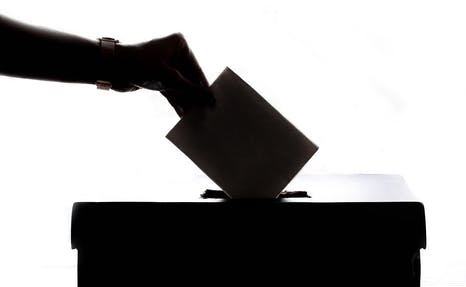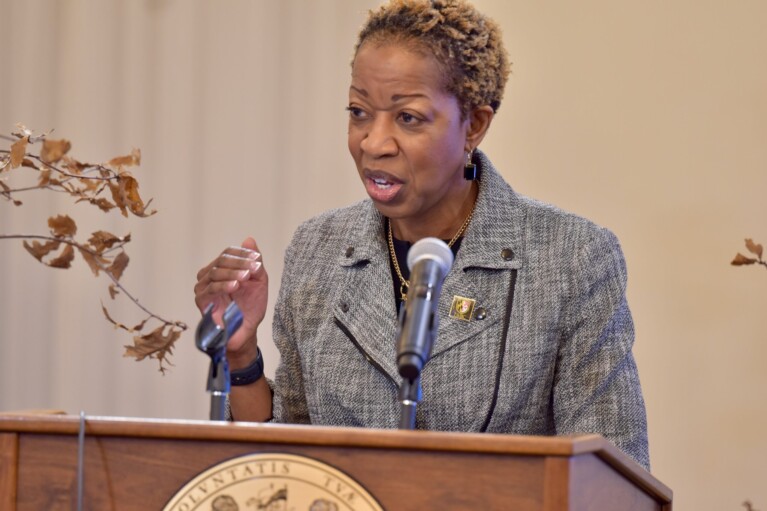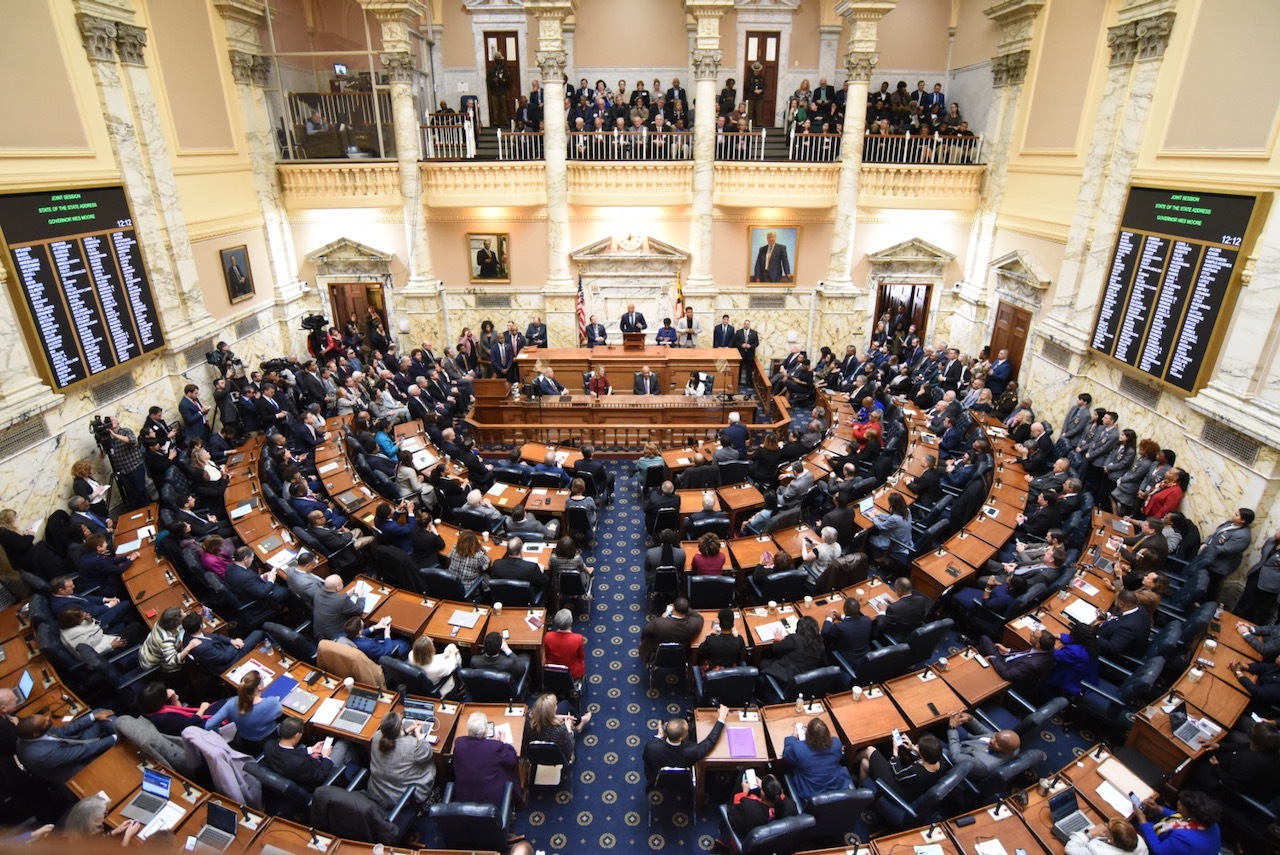Expressing the Will of the People: A Defense of Ranked-Choice Voting

We fear what we do not understand.
Del. Brooke Lierman has introduced HB 26 in the state legislature allowing Baltimore City to change the way it runs city elections to either a non-partisan top-two open primary (also known as a jungle primary) or a transferable vote system. Frank DeFilippo is scared of any such change, claiming it will destroy the Democratic Party in the city, but it is clear from his Maryland Matters column that he does not understand what he fears.
His strongest objection to the change appears to be that jungle primaries exist in California, and we’re supposed to sneer at anything Californian. This is a poor parody of a political argument. If we’ve sunk to the level where we dismiss all ideas because of their state of origin, we may as well give up on serious debate altogether.
In any event, jungle primaries with slightly different rules have been used in Louisiana and Washington state before being introduced in California. Louisiana can hardly be described as a hotbed of airy-fairy liberal notions.
Let’s be clear. Maryland’s system of closed primaries, and first-past-the-post counting systems is a really bad way to ensure that elections represent the will of the electorate. Primaries have the effect of giving outsize weight to the small number of voters who have the time and energy to show up for them.
Closed primaries are even worse as they legally deny the right to vote to a third of the electorate.
Mr. DeFilippo objects to open primaries, worrying that independent voters will “poke their noses into party business.”
But 27 U.S. states already hold some kind of open primary, welcoming the voices of non-affiliated candidates, and the two-party system is still going strong in those states. Also, I hate to break it to him, but letting voters poke their noses into party business is as good a definition of the goal of an election as I’ve heard in a long time.
The first-past-the-post system is an even bigger problem. It’s fine in an election with only two candidates, but add more viable contenders and the winner often gets elected with substantially less than majority support. A candidate can get elected even if they are the least favorite of a majority of voters.
This is not an abstract problem.
In 1992, Bill Clinton was elected president with 40 percent of the vote, largely because Republican-leaning voters split their votes between George Bush Sr. and independent candidate Ross Perot. In 2000, the tables were famously turned when 100,000 Green party voters helped oil man George W. Bush get elected at the expense of noted environmentalist Al Gore.
The fear that a vote for their preferred candidate will lead to the election of a strongly disliked candidate causes many voters to strategically cast their ballot for a mediocre alternative from a major party. This benefits the two larger parties but can hardly be claimed to help the voter. When forced to choose between a perfect candidate with no hope of winning, or major-party candidate they don’t particularly like, many voters may choose to stay home instead.
In addition to the problem of strategic voting, the recent gubernatorial election here in Maryland offers two examples of how the first-past-the-post system can either deliberately or accidentally subvert the will of the people. In Baltimore city, Sen. Jill Carter claimed that Nathanial Oaks’ name was left on the ballot in the 41st District despite his withdrawal from the race in order to split the black vote and hand a victory to her opponent J.D. Merrill.
In the gubernatorial race itself, Ben Jealous won a primary against eight other candidates with just 40 percent of the vote. While I liked (and canvassed) for Ben, the large number of Democrats who voted for Gov. Larry Hogan does suggest that he wasn’t the best choice for the party.
Even absent political shenanigans, first-past-the-post frequently acts to pick the wrong winner in a many-horse race.
Del. Lierman’s proposal allows Baltimore to use either an open, top-two primary, or a transferable vote system. With a top-two system, there is a single primary that is open to voters of all parties and none. The top two vote-getters in the primary advance to the general election regardless of party affiliation.
The intent of top two primaries is to recognize that the primary election is the real election in many heavily partisan districts, and to give general election voters a larger say in who their representative should be. Independent and Republican voters would also get to have a say in what kind of Democrat was going to represent them, and have a chance to have a voice in races where they currently have none.
In principle, a top-two primary should also encourage candidates to tack away from extreme positions because of the greater diversity of voters they want to appeal to. There are legitimate reasons to dislike the top-two primary, none of which Mr. DeFilippo touched on.
Primary voters remain considerably more powerful than citizens who just vote in the general. While open primaries are more representative, voters are still driven to vote strategically to avoid locking all their acceptable candidates out of the general.
For example, in the 2018 California primary, there were a number of congressional districts where the Democratic Party was widely expected to win, but the large field of Democratic contenders risked splitting the vote to the extent that the party was locked out of the general election. The majority of voters in those districts would have then been forced to choose between two unsatisfying choices.
Ranked-choice voting removes this problem. In a ranked choice system, each voter ranks each candidate in order of preference, by writing a number beside each candidate’s name. A candidate is elected if they receive 50 percent of the first preference vote. If not, the least popular candidate is eliminated, and their votes distributed according to the second preference marked on those ballots. If the voter did not mark a second preference, that ballot is discarded. The process repeats, with the votes of the least popular candidates being redistributed until one candidate receives 50 percent, or every other candidate has been eliminated.
The key strength of this system is that it eliminates the need for strategic voting. You can vote for Ralph Nader, then transfer to Al Gore, without worrying about accidentally handing an advantage to George Bush. Al Gore might not have gotten 50 percent of the first preference vote (OK, he might have, but that’s another matter), but likely more people would have preferred him over his opponent.
In the most recent primary here in Maryland, a Democratic voter could have given a preference to everyone but Ben Jealous if they wanted, without trying to predict who other voters were likely to strategically vote for. Ranked choice gives results that are less affected by the number of candidates on the ballot, and better represents the will of the people.
Ranked-choice voting also gives the voter the opportunity to use the ballot box to communicate their issues in more detail. In Ireland, which uses a variant of ranked choice more suitable for multi-seat constituencies, it is common for voters to give their first preference to a candidate running on a single hyper-local issue. This candidate has no hope of winning but provides voters in his town a chance to register their feeling on that one issue without otherwise giving up their chance to have a say on the actual winner of the election. Irish politicians study the pattern of vote transfers very carefully to better understand the mood of the electorate.
Mr. DeFilippo identifies “straight shooting,” where party bosses get to have an out-sized vote for their preferred candidate as a weakness of the system. This flaw just does not exist. If you vote for a single candidate, either your candidate wins or you abdicate your right to choose an alternative. Your vote is not weighted any stronger for only choosing one candidate, in fact, your voice is slightly weaker for not filling in the entire ballot.
If there is a weakness to ranked-choice voting is that it may take too much power from the parties. A progressive and a traditionalist Democrat may enter the same race, confident that their votes will transfer to each other. In time, they may feel more comfortable identifying as belonging to different parties. In a similar way, the Republican Party might splinter into a nativist/Christian wing and a big-business wing. These new parties might enter into unusual alliances once in power, but political gridlock is an equally plausible result. I suspect this loss of institutional power is what worries political operatives like Mr. DeFilippo this most.
If the goal is to increase voter participation, tinkering with the mechanics of the election are probably not the way to go. Mr. DeFilippo’s suggestions of Saturday voting would be more effective, as would universal mail-in ballots or reducing the voting age to 16. But if the goal is to make our representatives more representative of their districts, then Del. Lierman’s ideas deserve serious consideration.
— FERGAL MULLALLY
Born in Ireland, the writer has lived in Texas, New Jersey and California before landing in Baltimore County. 2018 was the first time he was actively involved in a U.S. election.




 Creative Commons Attribution
Creative Commons Attribution